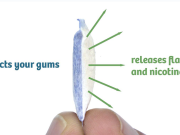Global studies consistently demonstrate a clear trend: as vaping rates rise, smoking rates fall. Research across various countries highlights how vaping serves as a harm reduction tool, helping smokers transition away from combustible tobacco, with the declines in smoking being particularly notable among younger populations, where vaping is more prevalent.
In line with this, the Centers for Disease Control and Prevention (CDC) has just released findings by the 2023 Behavioral Risk Factor Surveillance System (BRFSS) survey, which indicated that adult smoking rates have reached record lows, while reporting a marked decrease among young adults. More specifically, in 2023, only 12.1% of adults across the United States, including Washington, D.C., reported smoking, a decline from 14% in 2022.
This reduction equates to a significant drop of 4.7 million smokers, decreasing the total from 36.4 million in 2022 to 31.7 million in 2023. Moreover, the progress among young adults aged 18 to 24 is particularly striking: only 5.6% smoked in 2023, reflecting a 23.5% decline from the previous year and an impressive 76.5% decrease over the past decade.
Record lows for teen smoking and vaping rates
Moreover, youth smoking and vaping rates are at historic lows. Only 1.6% of middle and high school students report smoking, and youth vaping has dropped by 70.5% since 2019, from 20% to 5.9% in 2023. These findings of course highlight a significant milestone in U.S. public health, offering encouraging news for tobacco control advocates, as some states are approaching the possibility of virtually eradicating smoking among young adults.
Another paper based on CDC data collected via the National Youth Tobacco Survey (NYTS) for youth and the National Health Interview Survey (NHIS) for adults, has reported similar patterns. Written by tobacco harm reduction expert Professor Brad Rodu and Research Economist Nantaporn Plurphanswat, from University of Louisville, the study analyzed the smoking and vaping prevalence data for high school students from 2011 to 2022 (NYTS) and for adults aged 18–44 years over the same period (NHIS). They focused on tracking trends to understand the simultaneous shifts in smoking and vaping behaviors and their implications for public health, especially among youth and young adults.
Addressing the gap in reporting vaping and smoking rates seperately
The Centers for Disease Control and Prevention (CDC) has long monitored smoking rates in the U.S., emphasizing its status as the leading cause of preventable morbidity and mortality. While the NYTS and NHIS began tracking vaping in 2011 and 2014 respectively, the CDC has traditionally reported smoking and vaping rates separately. This reporting approach leaves a significant gap in understanding the interplay between smoking and vaping, particularly given ongoing debates about vaping as either harm reduction tools or gateways to smoking.
To address this gap, the current study combined smoking and vaping prevalence data for high school students from 2011 to 2022 (NYTS) and for adults aged 18–44 years over the same period (NHIS). The researchers found that smoking rates have declined sharply across all groups, particularly among high school students and young adults aged 18–20, which of course represents a significant public health achievement.
Concurrently, the compiled data indicated that vaping prevalence has surged, particularly among high schoolers and adults who formerly smoked, clearly highlighting the growing presence of e-cigarettes as a substitute nicotine product. Most notably, revealed the paper, quit ratios have risen sharply among young adults aged 21–24, an age group which has historically exhibited low quitting rates, making this progress particularly meaningful.
The importance of measuring combined smoking and vaping patterns
The significant decline in smoking suggests potential benefits of vaping as a harm reduction tool, especially for those transitioning away from traditional cigarettes. However, the simultaneous increase in vaping among youth and former smokers raises concerns about nicotine dependence and points to a complex nicotine landscape. The researchers highlighted that comprehensive tracking of combined smoking and vaping trends is essential for informed policymaking, as the current separate reporting obscures important dynamics.
More importantly, the findings suggest that vapes play a significant role in reducing smoking-related morbidity and mortality, underscoring the importance of balanced regulations to maximize public health benefits. Discussing the study with Professor Rodu, to gauge whether in his opinion local authorities are aware of these patterns, he told Vaping Post, that it is highly unlikely that they are not. “Officials at the CDC and FDA have these datasets, so it is impossible that they have never investigated combined smoking-vaping rates.”
Despite this, he added, there are no indications that these data are being used to inform policy. “I don’t see any evidence that CDC/FDA officials have considered findings like this in their actions.” This same argument was recently made by Lindsey Stround, Director of the Taxpayers Protection Alliance’s (TPA) Consumer Center.
Stroud recently wrote about the local tobacco control groups, like the American Lung Association, Campaign for Tobacco-Free Kids, and Truth Initiative, who continue pushing for stronger restrictions, including bans on flavoured products and oral nicotine pouches. These groups argue that youth vaping is such a significant issue, especially due to the availibility flavoured products, that it overshadows any possible benefits of the products.
The TPA director highlighted that federal inaction has contributed to such misinformation, leading to public confusion about harm-reduction products. Since 2015, the FDA has authorized only 56 newer tobacco products and 34 e-cigarettes, while approving over 660 combustible cigarette products (the irony). This disparity has fueled misconceptions about e-cigarettes’ relative safety. Stroud explained that to further decrease smoking rates, policymakers should be focusing on supporting harm-reduction products, given the results they are yeilding.
An example of such results is clearly indicated in an extract shared by Professor Rodu, taken from his and Plurphanswat’s study discussion, which shows accelerated quit ratios, in parallel with the emergence of vapes on the market. “In 2011 emerging young adults had the lowest quit ratio (15%) with higher rates with consecutively older age groups, which is consistent with other studies. Although quit ratios in all groups increased steadily, there was a sharp increase starting in 2015, especially in emerging young adults; the quit ratio more than doubled from 21% that year to 52% in 2022. It is important to note that the high quit ratio in 2022 among emerging young adults is contemporary with 2% smoking prevalence in both that group and in high schoolers.”












